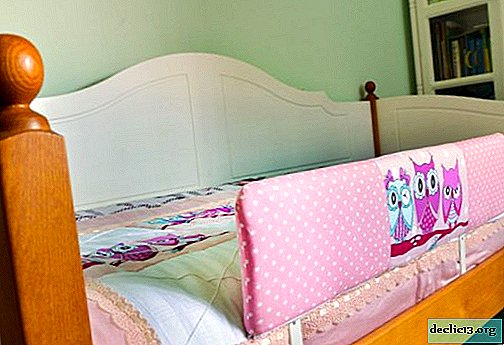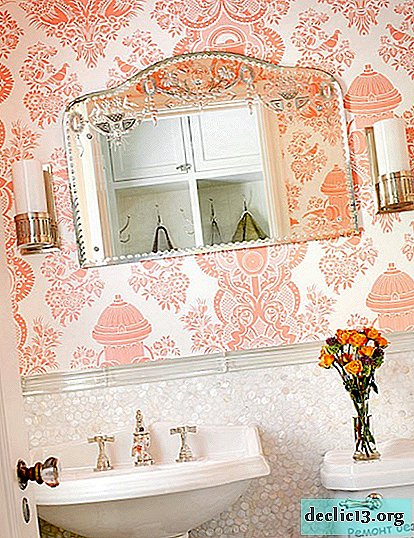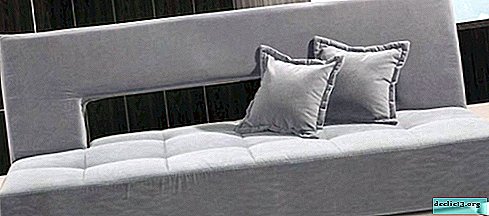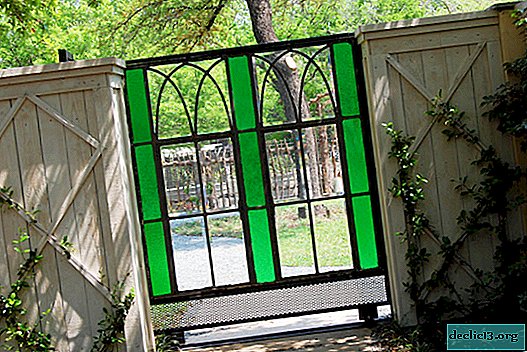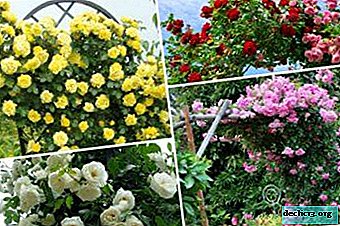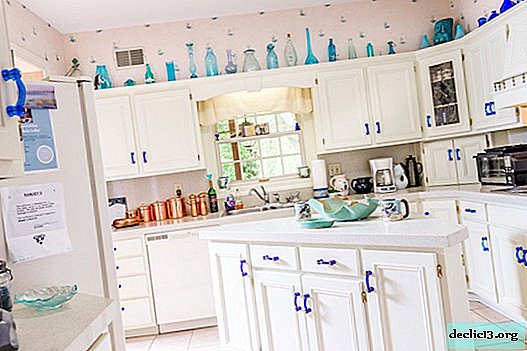How to make a universal bench for a garden with your own hands
Periodic garden work is an obligatory part of the working day of owners of cottages and household plots. But keeping the planting pleasing to the eye clean and tidy is a pretty hard, tedious job. From a long stay in a bent position, it hurts the lower back, legs hurt. And kneeling on the ground, which is far from always smooth and dry, is unpleasant. In this case, a universal bench for the garden will be an excellent assistant - making a convenient “changeling” with your own hands, which will facilitate the weeding, loosening and planting processes, is quite simple. Such products are very popular among gardeners, because with a minimum of labor and financial costs, they make it easier to care for the land, while ensuring a comfortable back position.
Design advantages
The device of such a bench is quite simple. The two supports on the sides are solid, steady legs that will not fall through even into damp or loose ground. And the inverted bench turns into a convenient soft stand under the knees or a palm rest for working in the garden.
The product, designed to perform numerous manipulations with the earth in the country or in the garden, is surprisingly multi-functional. On it you can:
- sit, relax in the interval between digging beds;
- to perform work accessible from a sitting position, comfortably sitting on a soft seat, reducing the load on the legs and back;
- turning over, kneel on it, if painstaking work requires you to bend over the garden;
- firmly rest your hands on the high side racks, then it will be immeasurably easier to rise from your knees if your legs are numb.
A do-it-yourself garden bench changeling will become a reliable assistant in performing many actions. With its help, any work in the garden is greatly simplified, including:
- cleaning the bark of trees, glossing over cracks, whitewashing trunks and lower skeletal branches;
- weeding the beds, diving seedlings, planting the soil, loosening, pruning strawberry mustache;
- gentrification of the territory, painting of borders, low picket fence, care of flowers in the flower bed;
- picking berries from bushes, sanitary pruning of low bushes, garter of cucumbers, other climbing plants, pinching.
Simplicity of execution and a wide scope of use determine the ever growing popularity of a highchair for working in the garden. Bench-changer makes it much easier to carry out daily care of plants and territory.
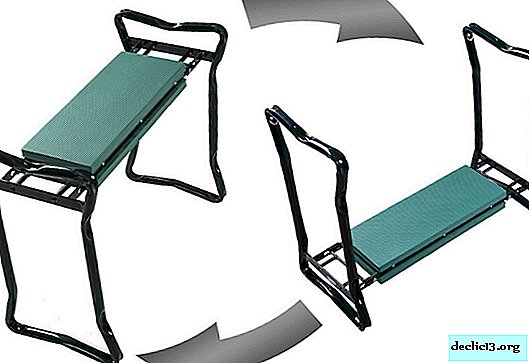




Product Dimensions
Having decided to make a bench with your own hands, you need to decide what dimensions are needed. Standard, without individual changes, a bench for a summer residence has the following dimensions:
- length - 60 cm;
- width - 30 cm;
- the height of the legs is 50 cm.
By creating a garden bench-changeling with your own hands, you can approach the process creatively, changing the standard sizes as individual needs. For example, to make the legs taller if the owner is tall and uncomfortable sitting on a low stool. You can also extend or expand the seat, according to the body of the one who will use the product, or for greater convenience. If the structure is assembled with your own hands from hollow tubes, then the main weight of the bench for working on the beds falls on the seat. In this case, it is quite possible to increase its size without significant weighting. Even if you add another 30 cm to the standard dimensions, the weight will not change much. If the garden highchair is made of wood or chipboard, any significant increase in size can affect the total weight of the structure, which will make it uncomfortable to carry, too cumbersome.
When determining the dimensions of a structure for making with their own hands, gardeners should consider which material it will be made of.

Materials and Tools
Without a doubt, every summer resident, home craftsman or just a zealous owner will have stock of trimmed boards, thick plywood or the remains of polypropylene pipes. It is quite easy to find raw materials from which you can make a garden bench for weeding, in the proportions that are needed, quite easily. Examples of materials that gardeners can use to make a bench with their own hands, features of their influence on the total weight of the product, the pros and cons are presented in the table.
Material | pros | Minuses | The weight |
Wooden boards | Available, durable, with proper care will last a long time | Wood is afraid of dampness and moisture, so there is a risk of swelling and decay if used and stored incorrectly | Depends on the type of wood and its degree of dryness. Well-dried pine or linden boards are light, wood is quite soft |
Chipboard, plywood | No special skills required, the simplest tool needed | Materials very quickly gain moisture, swell. Plywood begins to delaminate, and chipboard begins to crumble. Less durable than other options, able to deform from gravity | The heaviest materials that can be used to make a stool in standard sizes |
Polypropylene Hollow Tubes | Simplicity of processing, as a rule, scraps remain from repair or construction, do not require special conditions for operation | A soldering iron is required | The lightest material possible. You can create a bench of any size, which are convenient, it will have little effect on weight |
The universal bench bench for the garden is easily made with your own hands, you only need to make a little effort. In addition to the necessary raw materials, tools will also be required. Basically, those that are at hand are taken: a hand saw or a type of “grinder”, a jigsaw, a drill for drilling holes. To work with plastic tubes, you will need a hacksaw for metal, as well as a plumbing soldering iron.
When working with tools, it is necessary to protect hands with gloves and eyes with glasses to avoid injuries.
 Wooden boards
Wooden boards Plywood
Plywood Chipboard
Chipboard Polypropylene pipes
Polypropylene pipes Necessary tools
Necessary toolsHow to make yourself
The process of manufacturing a bench for weeding beds does not take much time. First you need to decide on the materials. Then you can start the labor process. To make a simple wooden bench, you will need:
- boards with a thickness of 15-25 mm;
- jigsaw for cutting holes;
- drill;
- sandpaper for polishing;
- furniture wooden pins;
- glue for wood;
- oilcloth;
- soft material such as foam rubber.
Two trapezoidal legs with a difference between the upper and lower parts of about 10 centimeters are cut from suitable width boards. For example, the upper element can be 25 cm wide, the lower one - 38. If the width of the boards is not enough, the sidewall parts will have to be additionally fixed to the crossbars at the top and bottom. The height of the sidewalls, as a rule, is from 50 cm and above. Work algorithm:
- Cut the seat a little narrower than the upper end of the sidewalls. The length is arbitrary - usually fifty centimeters.
- Cut out recesses of one centimeter exactly in the middle of the upper and lower parts of the sidewalls, leaving five centimeters from the edges.
- If you wish, cut oval holes for easy carrying and operation - in the central part of the seat and the wide lower parts of the sidewalls.
- In order to fasten the seat and sidewalls, drill holes for the pins: four in the narrow ends of the seat and four in the sidewalls. You need to do this so that the sidushka for 8-10 centimeters does not reach the edges of the narrow sidewalls.
- Drive the pins into the holes, well coated with glue, and connect to the sidewalls.
- In order not to kneel hard, cut the mattress to the size of the seat from the cushioning material, with a hole in the middle corresponding to what is on the seat, and then sheathe it with a non-marking oilcloth fabric. You can make the mattress double (top and bottom) or removable so that you can wash it.
You can also build a bench for weeding beds from small boards of hard wood. In this case, instead of a solid seat and sidewalls, the structure is assembled from separate trims. A self-made stool should be carefully varnished or painted to prevent exposure to dampness, dirt and insects.
For a better understanding of how to make a stool for weeding with your own hands, you should first study the diagrams and design drawings presented on numerous thematic sites.
 Cut two trapezoidal legs
Cut two trapezoidal legs Make holes for easy carrying and handling
Make holes for easy carrying and handling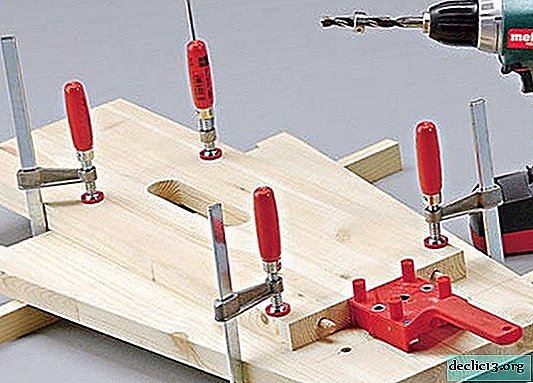 Drill pin holes
Drill pin holes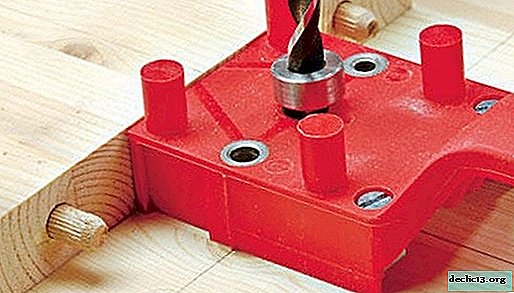 Make holes in the sidewalls
Make holes in the sidewalls Drive in the pins, smeared with glue, and connect to the sidewalls
Drive in the pins, smeared with glue, and connect to the sidewalls Finished bench
Finished benchTo make a stool from polypropylene tubes, you will need:
- polypropylene pipes with a diameter of 32 mm - four meters;
- ninety-degree corner of the same diameter - 8 pieces;
- tees for a diameter of 32 mm - 8 pieces;
- plumbing soldering iron;
- hacksaw for metal;
- plywood for the seat;
- material for soft backing.
First, you need to cut the pipes with a hacksaw according to this scheme:
- 24 cm - six pieces;
- 14.5 cm - six pieces;
- 34.5 cm - four pieces;
- 3 cm - four pieces.
Solder the middle of two segments of 24 cm and six of 14.5 cm. Then solder the upper legs-handrails, of two tubes 24 cm, and then the sides - 34.5 cm, the lower handrails-legs. From the bottom and top, screw the plywood cut to size. For softness, any porous material can be sewn or glued to it.
The final dimensions of the product, made according to the above instructions, will be:
- height - 49 cm;
- length - 60 cm;
- width - 33 cm;
- weight - 5.5 kg.
This simplest design has a number of advantages: it is lightweight, does not require special storage conditions, is painted, and is not subject to corrosion and decay. If necessary, the dimensions of the universal bench for the garden with your own hands can be arbitrarily changed without compromising on the strength or weight of the product.




Additional equipment
For the convenience of using the bench, it can be equipped with various useful trifles. Here imagination and personal needs will come to the rescue:
- so that it is convenient to use the product for processing beds, for example, when you need to kneel, weed, or loosen the planting and cut the plants, a variety of padded seats are suitable;
- a mat made of foam rubber wrapped in oilcloth can be attached on both sides of the seat to make it softer to sit and kneel; for the convenience of washing contaminated material, it is better to make it removable, for example, in the form of a pillow with ties;
- on the sidewalls you can fix fabric pockets with valves for small equipment or water bottles;
- for carrying, you can build a shoulder strap that allows you to free your hands.
To soften the seat mat, pieces of tourist foam, synthetic winterizer, polystyrene, holofiber, struttofiber, and other synthetic printed materials can be used.
As you could see, the simplicity of the design will allow you to easily create a "changeling" yourself. Such a homemade stool for weeding will remain a useful and necessary device for a long time, and its use in the garden and garden will help to save strength and health.





